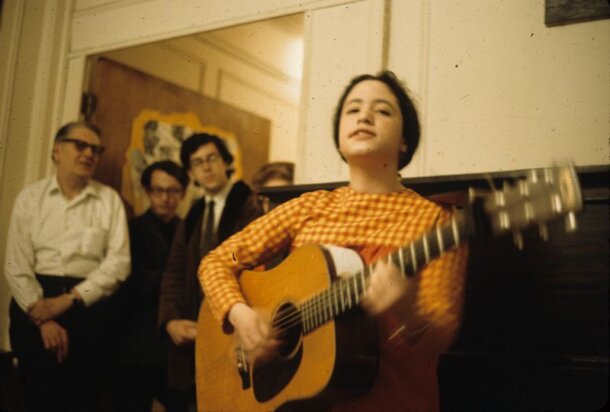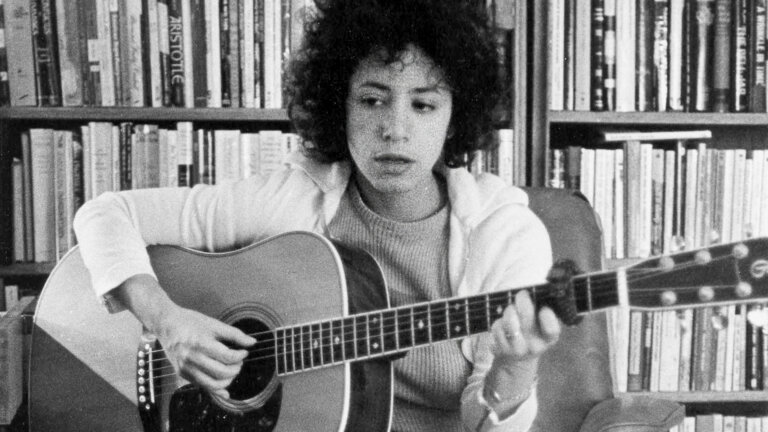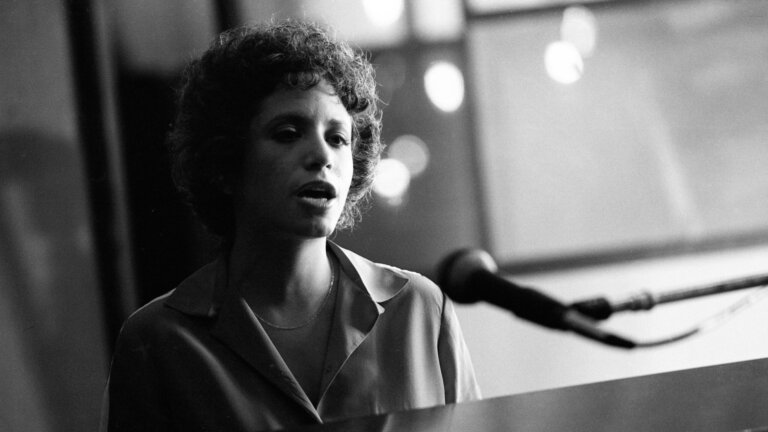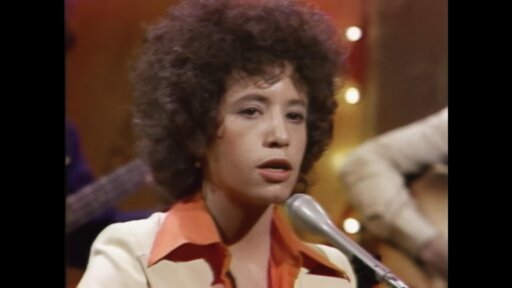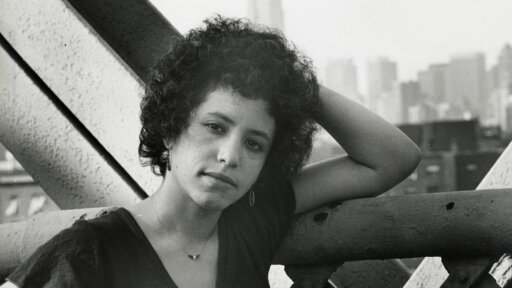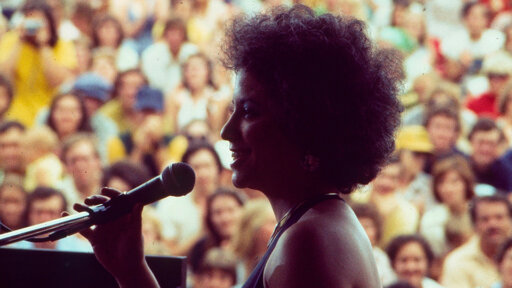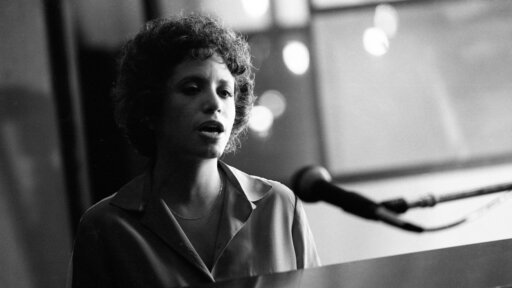Four decades ago, Janis Ian had every reason to believe her career was over. She hadn’t scored a single significant hit since “At Seventeen” a full decade earlier, and her powerful record company, Columbia, refused to issue the album she had just spent two years recording. In the wake of that decision, the label unceremoniously dumped her even though she had four albums left on her contract. She was then 30, an age most people consider vital, but which most record companies consider positively Jurassic.
Had Ian given up at that moment, as every indicator said she should, music listeners would have lost three full decades of finely honed lyrics, highly mellifluous music and bold public moves. During that span, Ian released no fewer than ten studio albums, almost as many as she issued in the earlier, more widely celebrated period of her career. Six of those albums appeared on a label she founded herself, defiantly named Rude Girl Records. Simultaneously, she toured the world up until 2022, when she decided to end her music career on her own terms with a valedictory album, “The Light at the End of the Line.”
Ian’s refusal to give up back then took no shortage of personal faith and hard-won funding, creating a template that now looks downright visionary.
The indie route she helped pioneer in the late ‘90s paved the way for the mind-set that rules the current age in music. Today’s artists take for granted that they’ll have to build their own audiences and help fund their own work. When Ian did that, the path was fresh. She was equally ahead of the game when, over two decades ago, she realized that giving away some of your music through streaming could encourage more sales, not fewer, something the industry at the time resisted with every lawyer they could get their hands on.
Ian’s advanced moves were hardly confined to business and technology. They extended to her personal life, too.
In 1992, she was part of the first wave of mainstream pop stars to come out about their sexuality along with women like k.d. lang and Melissa Etheridge, followed by a wave of men that included Elton John and George Michael. She titled the album she released at that time “Breaking Silence,” Ian’s first in seven years, representing the longest break between releases of her entire 55 year career. She was hardly idle in the time between. She busied herself writing songs in her new home of Nashville, including “Some People’s Lives,” which Bette Midler recorded for an album by that name in 1990 that became the biggest seller of her entire career.
It should surprise no one that songwriting helped pave Ian’s way back to performing. Her success in writing for others was established as far back as 1973, when Roberta Flack soared her song “Jesse” up the charts, buoyed by its placement on her smash album “Killing Me Softly.” One year later, Ian’s song “Stars” became an indelible part of Nina Simone’s live show, a placement later enshrined by its riveting use in the opening sequence of the 2015 documentary “What Happened, Miss Simone?” By the time Simone recorded the song, she and Ian had become close friends, though the relationship could be fraught, a nuance Ian chronicled in her pained salute to her titled “Nina,” which she included on her final album.
Songwriting not only provided a lifeline for Ian in mid-career, it established her initial claim on history. For her self-titled debut album in 1967, Ian wrote all eleven songs, a nearly unprecedented move at the time. With that feat, she became one of the first fully autonomous female singer-songwriters, having released her debut one month before the inaugural release from Laura Nyro, as well as a full year before the debut of Joni Mitchell, and three years before the first set that featured Carole King as both a singer and songwriter. The subject matter of Ian’s songs also broke ground. Her 1966 single “Society’s Child” addressed an interracial romance at a time when miscegenation was still against the law. In 1974, her hit “At Seventeen” confronted the listener with the full emotional toll of strict beauty standards, introducing a subject that wouldn’t become a part of the mainstream pop conversation until the last decade, when it became nearly mandatory to talk about it.
While Ian hasn’t seen a song of hers affect the wider culture in such a dramatic way since, she has never flagged in creating songs that told the itchy truth. Her song “Breaking Silence” didn’t address her coming out but, instead, covered an even more vexing subject—incest, something Ian never experienced herself but which she captured in her song with both empathy and rage. Another track on that album, “His Hands,” addressed spousal abuse, something Ian has experienced, which she talks about in Janis Ian: Breaking Silence. The title track of her 2000 album “God and the FBI” chronicled her parents’ experience in being taped, monitored and harassed by the U.S. government for their progressive politics. Four years later, she set her song “Billie’s Bones” at the gravesite of a stranger in order to gain the long perspective only a contemplation of death can offer. It’s hard to imagine a younger songwriter penning something like that. Only those who’ve done a lot of living could do so, an unassailable advantage for any older songwriter.
For Ian, the toll of time even wound up telling her what to do with her career. Three years ago, she made the hard decision to announce her retirement from music, in part to devote more time to her other writing projects, which have included penning science fiction novels and writing a column, both endeavors that involve none of the hardships of life on the road. At age 74, Ian can expect many more healthy years to write in whatever form she pleases. But before she fully pulled back from the music side, she made sure to put a period on that part of her career with an album that had the same effect as the finale of a fireworks display: It shot off every explosion she had left, starting with the album’s opening salvo. In “I’m Still Standing,” Ian sang, “See these marks on my skin / They are the lyric of my life / Every story I begin / Just means another end’s in sight.”
She didn’t only sing about herself on the album but also about those who’ve followed her. In the title track, she directly addressed her fans: “You were there when I laughed / You were there when I cried / You were there as I tell you goodbye.”
The voice that delivered those lines showed more wear, and fell to a deeper register than the one that sang “At Seventeen.” But only a singer with that much experience could make those lines ring true. We were lucky this particular singer used that voice so often, so well and for so long.
The views and opinions expressed in this article are those of the writer.

